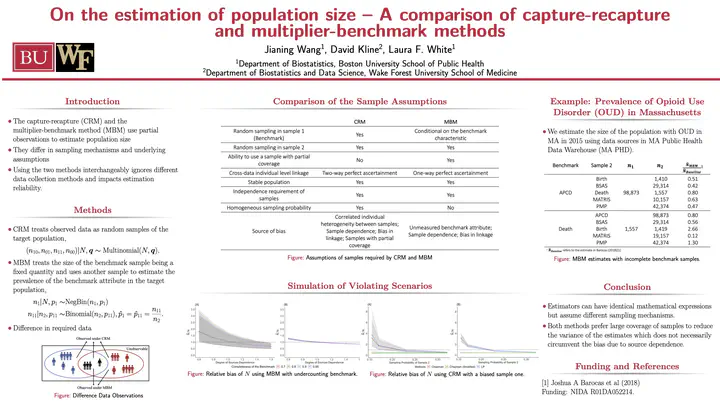On the estimation of population size – A comparison of capture-recapture and multiplier-benchmark methods

Abstract:
Approaches to population size estimation of hidden populations are of importance across a wide spectrum of disciplines, especially when census and simple random sampling are impractical. The capture-recapture (CRC) method and the multiplier-benchmark method (MBM) are two commonly used approaches using data that partially capture the target population and overlap in a known way. Due to similarities in required data structures, the approaches are often used interchangeably without critical appraisal of the underlying assumptions, especially in the two-sample case. We describe the sampling mechanisms and assumptions underlying both approaches to highlight similarities and differences. We emphasize that the CRC method uses data sources as random samples and describes two-way inclusion patterns. In contrast, in MBM, one source collects a sub-population that is seen as fixed, and the one-way inclusion pattern is modeled. We also discuss the implications of these differences through simulation and real data to guide the choice of method in practice. Careful study of data structure, relationship, and possible generation process are crucial to assess the appropriateness of using these methods.
Keywords: Population size estimation, capture-recapture, benchmark-multiplier